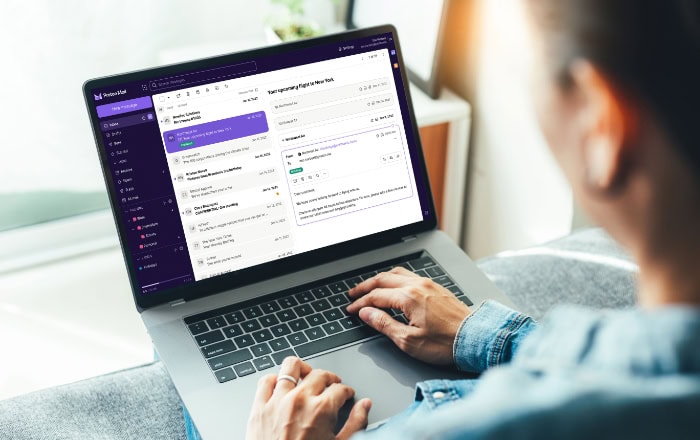What Is Email Spam? Why It Exists and How It Works

Email spam is far more than a simple nuisance clogging your inbox; it is a persistent and costly problem for everyone online. Billions of unsolicited messages are sent daily, ranging from harmless but irritating advertisements to malicious attempts to steal personal information, install malware, or commit fraud.
These messages often serve as a gateway for significant security threats, making them a serious issue for individuals and businesses alike. The fight against junk mail involves more than just a delete button.
It requires a grasp of the economic incentives driving it, the sophisticated tactics used to bypass filters, and the layered defenses necessary to protect personal and organizational security. Knowing the enemy is the first step toward winning the battle for your inbox.
Defining Spam and Its Scope
Most people intuitively know spam when they see it, but a clear definition is necessary to separate it from legitimate forms of digital communication. The term encompasses more than just unwanted advertisements.
It refers to a specific method of mass communication defined by its unsolicited nature and widespread distribution. Establishing this foundation clarifies why spam is not only an annoyance but also a distinct technical and security challenge.
Unsolicited Bulk Email
At a technical level, spam is formally known as Unsolicited Bulk Email, or UBE. The word unsolicited is critical; it means the message was sent without the recipient's verifiable permission or prior consent.
Legitimate marketing relies on an opt-in model, where users explicitly agree to receive correspondence. Spam operates on the opposite principle, sending messages to anyone on a list regardless of their wishes.
The bulk component refers to the mass distribution of identical or nearly identical messages to a large number of recipients simultaneously.
Core Attributes of Spam
Three attributes reliably distinguish spam from permission-based email marketing: automation, lack of consent, and mass distribution. Spammers use automated software to send millions of emails with minimal effort, achieving a scale impossible through manual methods.
The absence of recipient permission remains the most fundamental violation. A person who signs up for a newsletter has granted consent; a person whose email address was harvested from a public website and added to a list has not. Finally, the indiscriminate broadcast to massive lists separates spam from targeted communication, where messages are sent to a specific, relevant audience.
Spam Beyond Email
While email is the most common channel, the practice of sending unsolicited bulk messages extends to other platforms. The same patterns of behavior appear in SMS messages, often called “smishing” when they contain phishing links.
Social media platforms are also affected, with spam appearing as unsolicited direct messages, friend requests from fake accounts, or comments posted automatically on public pages. The underlying method is the same across these channels: automated, non-consensual communication sent at a massive scale to exploit or advertise to recipients.
The Mechanics and Motivation Behind Spam

Spam persists because it is a highly profitable enterprise built on a simple economic model and supported by a global, decentralized infrastructure. Attackers exploit the low cost of sending email at a massive scale, relying on a small number of responses to generate revenue.
This system works through a combination of powerful distribution networks and methodical techniques for gathering and confirming potential targets.
The Economic Incentive
The business model for spam is a numbers game. Sending an email costs virtually nothing, so spammers can distribute millions or even billions of messages at a negligible expense.
Because the initial investment is so low, only a tiny fraction of recipients need to respond for a campaign to be profitable. Whether they are selling questionable products, promoting scams, or distributing malware, the math works in their favor.
This economic reality is why spam constitutes a significant portion of all email sent worldwide every day.
The Distribution Infrastructure
To achieve such massive volume and evade detection, spammers rarely send emails from their own computers. Instead, they rely on botnets, which are vast networks of malware-infected devices, including personal computers, servers, and smart devices.
A central operator, known as a bot-herder, commands these compromised machines to send out spam messages simultaneously. Using a botnet provides two major advantages: it dramatically amplifies the sending volume, and it obscures the true origin of the spam by distributing it across thousands of different IP addresses around the globe, making it difficult for internet service providers to block.
Harvesting and Verifying Targets
A spam campaign is only effective if it reaches valid email addresses. Spammers employ several methods to build their mailing lists. They use automated scripts to harvest addresses from public sources like websites, forums, and social media profiles.
They also purchase lists from other criminals, often sourced from data breaches. Once they have a list, spammers must validate the addresses to ensure they are active.
They may use a directory harvest attack, which rapidly queries a mail server to see which usernames are valid. Another common technique is to send a blank message or a message with a tracking pixel to see if it gets delivered successfully, filtering out inactive accounts for future campaigns.
Common Spam Types and Evasion Tactics
Spam is not a monolithic category of unwanted email; it encompasses a wide variety of messages with different objectives, from aggressive advertising to outright financial theft. To keep their campaigns effective, spammers have developed a sophisticated arsenal of tactics designed to circumvent the security filters that protect inboxes.
These methods involve manipulating the message content, its technical structure, and the way it is delivered.
Categories of Spam Content
The payload of a spam message determines its specific threat. Some of the most prevalent categories include:
- Unsolicited Marketing: The most straightforward type of spam involves advertising products or services, often of questionable quality or legality, without the recipient's consent.
- Phishing: These fraudulent emails impersonate legitimate organizations, such as banks or tech companies, to trick users into revealing sensitive information like passwords, credit card numbers, or personal identification details.
- Malware Distribution: Some spam messages are designed to infect a user's computer. They may contain malicious attachments disguised as invoices or important documents, or include links that lead to websites hosting malware.
- Scams and Fraud: This broad category includes advance-fee scams, where the sender promises a large sum of money in exchange for a small upfront payment. It also covers fake antivirus alerts that scare users into purchasing useless software, as well as phony sweepstakes or lottery notifications that require a fee to claim a non-existent prize.
- Adult Content: A significant portion of spam consists of unsolicited emails promoting adult websites or products, often using explicit language or imagery to capture attention.
Technical Evasion Strategies
Beyond the message content, spammers employ technical strategies to bypass filters that analyze sending behavior. One common method is snowshoe spamming, where outgoing emails are distributed across hundreds or thousands of different IP addresses and domains.
Each source sends a very low volume of mail, so no single address develops a poor reputation that would cause it to be blocked. Another technique is image spam, where the entire message, including all text, is embedded within a single image file.
Because most filters are designed to scan text, they cannot “read” the content of the image, allowing the message to slip through undetected.
Content Obfuscation Techniques
Spammers also use creative methods to disguise the content within the email itself. Deliberate misspellings, such as using numbers or symbols in place of letters, are a classic way to defeat simple keyword filters.
Attackers may also insert unusual punctuation or use complex HTML formatting to break up words and phrases, making the text unreadable to an automated scanner but still comprehensible to a human. In some cases, the entire payload is contained within an image, making it a form of both technical evasion and content obfuscation.
These tricks are part of a continuous cat-and-mouse game between spammers and security systems.
Risks and Associated Impacts

The consequences of spam extend well beyond a cluttered inbox. Unsolicited emails introduce significant security vulnerabilities for individuals and organizations, create a substantial operational drag on resources, and even produce unintended negative effects that impact uninvolved parties.
These issues transform spam from a simple annoyance into a costly and dangerous problem.
Direct Security Threats
Spam is a primary delivery mechanism for a range of cyberattacks. Malicious links or attachments hidden within these emails can install malware, such as ransomware or spyware, onto a user's device upon interaction.
Phishing campaigns, which are a specialized form of spam, impersonate trusted entities to deceive recipients into surrendering confidential information like passwords and financial details. This stolen information can then be used to facilitate identity theft or financial fraud, leading to direct monetary loss for individuals and severe data breaches for companies.
The Operational Burden
For both individuals and organizations, spam imposes a significant operational cost. The sheer volume of junk mail clogs inboxes, forcing users to spend valuable time sorting through and deleting unwanted messages, which detracts from productivity.
On a larger scale, spam consumes considerable technical resources. It takes up server storage space, uses network bandwidth, and requires the continuous attention of IT administrators who must manage, update, and fine-tune email filtering systems to keep the flood of junk mail at bay.
Collateral Damage from Backscatter
An often-overlooked side effect of spam is a phenomenon known as backscatter. This occurs when a spammer forges the sender's address in an email campaign.
When one of these spam messages is sent to an invalid or non-existent email address, the recipient's mail server generates a non-delivery report, or a “bounce” message. Because the sender's address was forged, this bounce message is sent to the innocent, impersonated user.
The result is that people who had no involvement in the original spam campaign receive unsolicited bounce notifications, inadvertently becoming victims of spam themselves.
Detecting and Preventing Spam
Effectively combating spam requires a multi-layered approach that combines sophisticated automated technologies with vigilant human behavior. No single solution can stop every unwanted email, so a robust defense relies on a series of checkpoints that filter messages before they reach an inbox.
The Automated Filtering Pipeline
Modern email security systems use a pipeline of sequential checks to analyze incoming mail. Each stage is designed to identify and block spam using different criteria, creating a layered defense.
- Reputation and Connection Checks: The first line of defense occurs when an email server first attempts to connect. The system checks the reputation of the sender's IP address against global blocklists of known spam sources. If the sender has a poor reputation, the connection may be refused before the email is even transmitted.
- Sender Authentication: To combat forgeries, filters use authentication protocols like SPF, DKIM, and DMARC. These standards allow a receiving server to verify that an email claiming to be from a specific domain was actually authorized by the owner of that domain. Messages that fail these checks are often flagged as suspicious or rejected outright.
- Content and Attachment Scanning: Emails that pass the initial checks undergo content analysis. Filters scan the message body and subject line for keywords, phrases, and formatting tricks commonly associated with spam. Attachments are also inspected for malicious code or file types known to carry malware.
- Sandboxing: For potentially dangerous but uncertain emails, an advanced technique called sandboxing may be used. Suspicious attachments or links are automatically opened in a secure, isolated virtual environment. The system observes the file's behavior to see if it attempts to perform harmful actions. If it does, the email is blocked; otherwise, it is delivered to the user.
The Role of User Vigilance
Even the best automated filters can be bypassed, making the user the final and most critical line of defense. Cultivating a healthy sense of skepticism is essential for personal security.
Before interacting with any email, it is wise to verify the sender's address to ensure it is legitimate and not a subtle impersonation. Similarly, you should always hover your mouse cursor over links to preview the actual destination URL before clicking.
Unexpected attachments, especially from unknown senders, should be treated with extreme caution and never opened. Finally, it is crucial to handle spam correctly.
Never reply to a spam message, even to ask to be removed, as this only confirms your email address is active. Instead, use the “Report Spam” or “Mark as Junk” function in your email client.
This action helps train the filter to recognize similar messages in the future.
Implementing Organizational Defenses
For businesses and other organizations, preventing spam is a matter of enterprise-wide security policy, not just individual action. A layered defense strategy combines multiple security tools to protect the entire network.
This approach goes beyond a simple spam filter at the email gateway and includes endpoint protection, web filtering, and employee training programs. Organizations often implement category-aware policies that allow administrators to apply different actions based on the type of threat.
For example, a policy might automatically delete confirmed malware, quarantine suspected phishing attempts for review, and allow low-risk marketing emails to be delivered to a junk folder. This granular control improves the accuracy of the filtering system and provides a more robust defense against the full spectrum of email-based threats.
Conclusion
Spam remains a persistent and evolving threat, but it is a manageable one. By defining it as unsolicited, bulk communication, we can separate it from legitimate correspondence and target it effectively.
The fight against junk mail is not won by a single tool but through a combination of automated security systems and educated user behavior. Capable filtering technologies that authenticate senders and scan for malicious content provide a strong first line of defense.
However, the final safeguard is a vigilant user who can recognize suspicious messages and handle them appropriately. When these technical and human defenses work together, they significantly reduce security risks and reclaim the productivity lost to cluttered inboxes.


